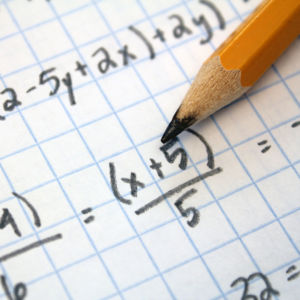We all want the best outcomes when teaching math to students. But how many teachers and parents are passing up golden opportunities to present math principles alongside the real-life pursuits of our kids?
Math is omnipresent — found in video games, participatory sports and even on walks to the park. Seizing on these opportunities to incorporate math has been called personalized learning.
“Personalized learning” is a popular phrase in education. In mathematics, personalized learning is often equated with self-paced, computer-assisted instruction, or with intelligent tutoring systems that adjust based on learner knowledge and actions. These are forms of adaptive learning, defined by Jan Plass as “an approach to the design of a learning system in which each learner is provided with the kind of experience he or she needs at any given time in order to be successful in reaching the intended learning outcomes.”
The U.S. Department of Education’s (2016) definition of personalized learning includes that “learning activities are meaningful and relevant to learners, driven by their interests, and often self-initiated.” But what does this look like when you are learning mathematics? Can quadratic equations be meaningful, relevant, interest-driven and self-initiated? Research points to some promising strategies to do just this. So I’m proposing five ways to personalize mathematics instruction to make mathematics learning meaningful and interesting.
—Connect mathematics to learners’ interests.
Most people do not use formal math concepts like algebraic equations in their everyday life when they are pursuing interests they are passionate about like sports, music or video games. However, the activities in many interest areas have underlying relationships between quantities that can be modeled with mathematics.
For example, in a video game, quantities like health, experience points and loot are all measured and change over time and with different decisions the player makes. Connecting math instruction to students’ out-of-school interests in this way can be beneficial to their interest in math (Bernacki & Walkington, 2018), and to their learning of math (Walkington, 2013).
—Connect mathematics to learners’ career aspirations.
Many careers, particularly those in STEM (Science, Technology, Engineering, and Mathematics) and STEM-related fields use a lot of mathematics. The mathematics that is used often appears in very different formats than “school math,” but the day-to-day work that is done in these careers can still give meaning to many of the math concepts students learn in the high school sequence.
We currently have a project examining the effect of making math-career connections. Prior research suggests that having students focus on the usefulness of math to their lives and goals is beneficial, but perhaps only if students have a legitimate role in making the connection. Career connections are also the cornerstone of career academy models, which are often seen in high schools.
—Connect to mathematics learners’ surroundings and community.
It’s a bit of a cliche that “math is everywhere,” but having learners view the world through a mathematical lens may help develop interest in and literacy for mathematics.
The walkSTEM initiative is an excellent example of how this can be accomplished. WalkSTEM is a non-profit that supports the creation of math walks in schools and neighborhoods. During these walks, learners can see and explore how math appears in the art, architecture and natural surroundings in their community. These math walks can be designed and led by anyone — from elementary school students, to teachers, to educators in informal learning environments. The purpose is to help people appreciate the mathematical nature of the world around them, and to engage in conversations with each other about mathematics that normalizes its role in everyday life.
—Connect mathematics to physical movements.
Mathematics is sometimes thought of as an abstract, highly structured, and objective set of rules and procedures that reveal universal truths. But recent thinking in the field of mathematics education has argued that mathematics was created by humans to suit human needs, and thus is connected to our bodies, our actions, to what we are able to perceive in the world, and to how we perceive it.
What this means is that we can learn things — even abstract things like algebra equations or geometry theorems — through perception and physical action.
Activities that involve using hand gestures to represent mathematical ideas, or using your body to understand concepts like angle relationships or proportions, or manipulating concrete or virtual objects to reason about relationships, can be designed to take advantage of this embodied perspective on learning.
—Engage learners in mathematics problem creation.
Learning is most personalized when students are in the driver’s seat — when they can use their knowledge and creativity to write and share their own math problems and scenarios. Learners might be particularly well-qualified to write mathematical scenarios that capture something they are deeply interested in — like how scoring works in Ultimate Frisbee, or how many frames per second are needed to make a Lego stop-motion movie.
But any of the previous four approaches we’ve reviewed can be implemented in a student-driven way — from having learners come up with their own gestures and actions that capture mathematical ideas, to having students design and act as leaders for a math walk at their school.

